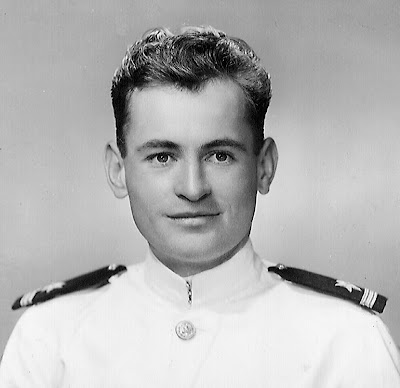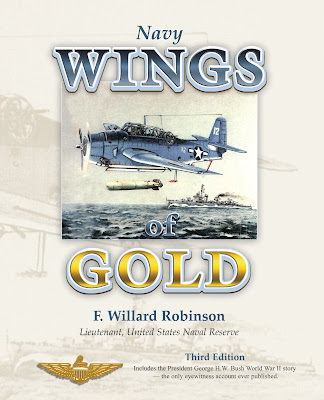CALL OF DUTY: WHEN A LEADER SERVES
F. Willard Robinson, Ed. D.
Most of us hold a leadership role at some time in our life. It might be in family, church, work, or school. However, it would be my hope, that some of the principles I learned the hard way, as a navy aircraft carrier torpedo pilot in World War II, as a teacher, high school principal, father, grandfather, and great-grandfather, might still be of value today.
From 1959 until 1976, I was the principal of Beverly Hills High School in Beverly Hills, California. Now, in retrospect, I see how that troublesome time has affected our lives today. A generation has passed but there is merit in recalling the cultural confrontation of that time which has changed our nation and our institutions today.
Life under the relentless passage of time moves on. How easy it is to forget the lessons we would do well to remember. Some of the dynamics that existed between administrators and students in the high schools and universities of the 1960's can be present between leaders and their people today. This is true in corporate and political institutions as well. For persons who seek new dimensions in the quality of their leadership—and, as I have said, we are all leaders at some level—the experience I relate may provide insight and encouragement.
Rebellious youth of the sixties fought naively to build a “new world.” But those of us in leadership too often confused force with strength, and at times could be inflexible and insensitive in our approach. As a result, leaders often became part of the problem, rather than enablers of creative solutions. We all had a lot to learn. Educational leaders everywhere went through crises during this rebellious period in American education. Some survived because of their charisma and basic popularity. In rare cases administrators modified their style and became effective leaders.
It became painfully apparent that changes would have to take place in me, if I were to survive these tumultuous times. The strong benevolent leader would never describe me. That would not have worked, anyway. I had tried to be responsible, fair, and decisive, when I thought the situation demanded that kind of strength. However, that wasn't working either. I was committed to and felt most comfortable in a participatory leadership style, one that involved others in decision-making and deliberately sought the unique strengths of the individual. But I was experiencing growing confusion rather than solutions. An arbitrary display of power was equally counterproductive. Flexibility in leadership was demanded, but where was the line to be drawn between authority and participation in the fluid issues that came wave after wave?
So, how does one determine validity in leadership? In a world that measures validity in terms of results and secured power, this is not an easy question. As some of the scales have dropped from my eyes, I seek a leadership somewhat different from the world's. I want to be a leader who does not depreciate others, but values, enriches and frees those with whom I work. I want to be a leader who exudes love and concern, recognizing we are all trapped in the Human Condition.
Effective leadership calls for a vision that is dynamically communicated and has a strategy for accomplishment. It seeks to nurture and help others in their maturing process. It is a leadership that lifts people, rather than one that represses and controls people. This is Servant Leadership. Today's institutions, this includes our families, need nothing less.
My fifteen-year tenure as principal of Beverly Hills High School was the defining period of my life, as far as learning about leadership was concerned. So, when I was asked to write an article for Wandering Educators on leadership, reflecting my experiences as a U.S. Navy torpedo aircraft carrier pilot in World War II, a father, a teacher, an administrator, a grandfather, a great-grandfather, and I might add, as a husband for sixty-seven years, what better message could I bring, than the one that was the defining period of my blessed ninety-one year life.
* * *

In February, 1944, I arrived in Hawaii, on the U.S.S. Relief hospital ship, and was taken to the Base Eight Naval Hospital, above Pearl Harbor, for care and recovery from multiple blast, shrapnel and crash injuries. I had received these injuries during our squadron's attack on Kwajalein in the Marshall Islands over a month before.
Shortly after, Admiral Chester Nimitz, Commander of the Pacific Fleet, visited me. What an impressive man he was -- tall, snow white hair, erect and trim. With a quiet and genuine compassion, he sat down at the foot of my bed. "How did you get hurt?" he asked. I told him my story. He listened. One of the best "gifts" one can give a hurting person is to listen to his story!
"Well, Lieutenant, you were out there doing your job. I know it is dangerous work. The country and I thank you for being there. God bless you."
This remains as one of the very special moments of my life. I was feeling like such a failure, and hurting so much both physically and psychologically. Now in this brief moment this powerful but humble man helped me get my life back on track. I would have done anything for him. How I wish our country had more men of the stature of Admiral Chester Nimitz. He will always be my special hero. He was an outstanding example of Servant Leadership.
* * *
Following his military service as a Naval Aviator in World War II, Lt. Robinson returned to the University of Southern California to earn his doctoral degree in Educational Administration and Philosophy. For three decades, Dr. Robinson worked in public education as a teacher and as a secondary-school administrator, culminating in his fifteen-year tenure as Principal of Beverly Hills High School in Beverly Hills, California. In addition to his new book, Navy Wings of Gold, which is now available for purchase at NavyWingsofGold.com, Dr. Robinson is also the author of the provocative book, Beverly Hills Principal, published in 1999. It is a story of school leadership during the 1970’s, a time that unraveled America.

Dr. and Mrs. Robinson now reside in Boise, Idaho where, in 2008, they celebrated their 65th wedding anniversary. Both remain active in church and civic affairs.
All photos courtesy and copyright Dr. Robinson
